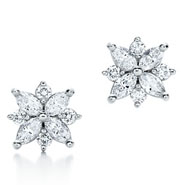- About
- Subscribe Now
- New York,
September 28, 2010

The luxury jewelry industry has seen major growth recently and is on-track to deliver high results this year, according to a study by Stockcall.com.
China has seen the greatest area of expansion, since consumers have gained access to more unrestricted funds and thus have had a greater demand for western luxury goods. This has pushed jewelry companies’ revenues from the international market up 50 percent.
High-end jewelry retailer Tiffany & Co. has seen a 7 percent growth in Asia, excluding Japan where its growth has been steadily weak.
European sales have also grown recently, pushed primarily by Britain. Tiffany here saw a 21 percent growth, according to Stockcall.com.
At the same time, the American market has taken a hit due to the high unemployment rate and low wage increases. The economic recession has decreased the sale of products under $500, according to the study. Most purchases within that range were made by foreign tourists.
Tiffany has also seen a rise in the U.S. Its Fifth Avenue Manhattan store saw improved sales, with an 8 percent increase in its top line and greater sales among its Elsa Peretti and Paloma Picasso brands.
Most luxury sales have stayed stable, but the study predicts that consumers will hold-off on purchasing this caliber of items until the economy improves.
With gold reaching an all-time high on Sept. 14 of this year at $1,276.50, brands such as Tiffany have begun to offer non-metal based products, like leather handbags and wallets, in an attempt to expand its offerings.
The Tiffany collection includes men’s and women’s bags, wallets, passport holders, luggage tags, datebooks and journals.
Here is a screen grab from the Tiffany Web site, promoting its new Tiffany Leather Collection:
Although it has seen a drop in the American market, specifically regarding lower-priced products, Tiffany’s demands for pricier goods remains high.
Final Take
Kaitlyn Bonneville, editorial assistant at Luxury Daily, New York
Share your thoughts. Click here